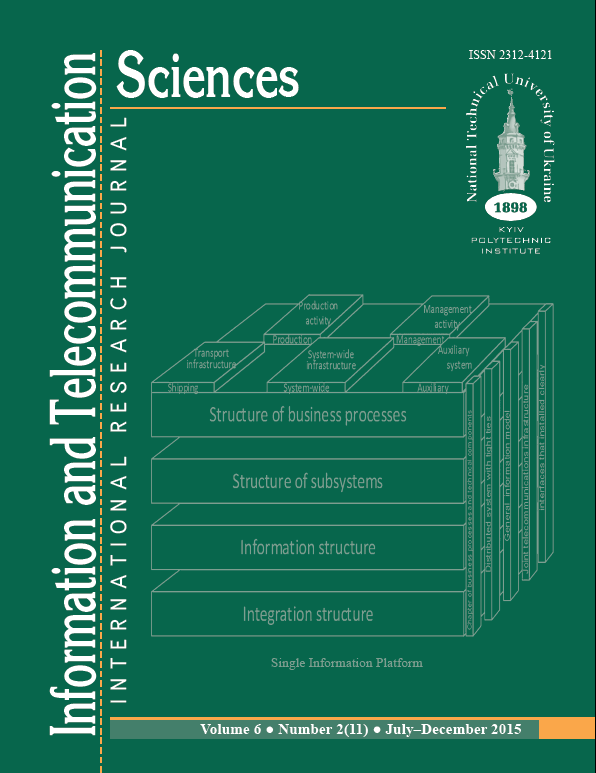THE PRODUCTIVITY ANALYSIS OF DISCRETE INFORMATION TRANSFER SYSTEM NEAR THE SHANNON BORDER
DOI:
https://doi.org/10.20535/2411-2976.22015.5-12Keywords:
information theory, productivity, channel capacity, information efficiencyAbstract
Background. The channel capacity and productivity assessments give a chance for system analysis principles development in applied information theory for telecommunication. The central task in the bounds of proposed research is the study of discrete communication channel (DCC) productivity.
Objective. The main task of current study is the analysis of discrete communication channel productivity through identification of the regularities in reliability behavior of modulation multi-position keying signals. Integral productivity assessment is the efficiency metric of communication channel resources usage.
Methods. Solving the main task of research generates bases on the finding the informational abilities of DCC. These informational abilities of DCC are expressed by channel capacity and productivity per one bit of information. Finally, the interdependence between channel capacity and productivity expressed via the information efficiency parameter ηС is the integral productivity estimation for DCC. The case of multiposition keying with its varieties (QPSK, QAM-16, and QAM-64) creates significantly bigger interest.
Results. The model of discrete information transfer system that includes source of discrete information, discrete communication channel with noises, defined method of signal forming and method of transmitted signal processing is
proposed. The regularities of the channel capacity change and productivity of a discrete communication channel are established.
Conclusions. The hypothesis of the existence of extremes (upper limits) performance of DCС in discrete information transfer system without limitations on the received signals reliability is practically substantiated. Quantitative assessment to the discrete communication channel capacity and productivity extrema are presented. For achieving required reliability is noiseimmunity
coding as the recognized tool in the Shannon theory.
Key words: information theory; productivity; channel capacity; information efficiency.
References
Shannon C.E. Probability of Error for Optimal Codes in a Gaussian Channel. – Bell System Tech. J. – 1959.
Gallager R.G. Information Theory and Reliable Communication. – J.Wiley&Sons, Inc. – 1968.
Uryvsky L., Мoshynska A. Research of the index dynamics for the formula Shannon for discrete information transmission. – Zvyazok, № 3, 2007. – с. 58-61.
Uryvsky L., Moshynska A The analysis of the transmission system productivity to discrete information near-by the border Shannon in the conditions of the real antiinterference coding // X International PhD Workshop OWD’2008, 18–21 October 2008, Poland, Gliwice., рр. 573-

